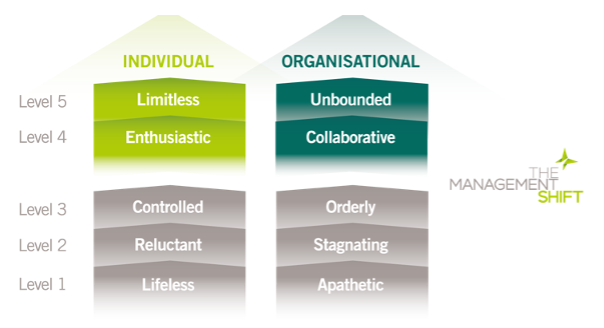If it’s true that 90% of of career progression success relies on personal impact and exposure, your ability to be heard is crucial. Janie van Hool, author of The Listening Shift, offers some advice
In 1996, Harvey Coleman published Empowering Yourself, a candid and refreshing insight into what it takes to progress at work. His findings were impactful – just 10% of career progression success, he suggested, came down to being good at your job. The other 90% relied on personal impact and exposure. In the second edition, published 15 years later, nothing had changed, and I have no doubt it still holds true in today’s workplace. Your ability to make yourself, and what you are doing, known about is the art of being heard.
I use the word ‘art’ intentionally – art is an expression of skill and imagination, and to achieve the most from your talent takes dedication and discipline. It often involves the repetition of skill, practicing until it becomes core, and laying the foundations of confidence in our ability. So, what should you be working on to develop the art of being heard?
Are you making it too hard for your peers to listen?
Firstly, establish a connection between what you want to say and what others want to hear. We speak at around 160 words per minute, but we process at between 400-800 words per minute creating a gap that allows our listener’s minds to wander. Relevance is key to managing this challenge.
If your content is not relevant to your listeners – whether in presentations, meetings, or conversations – then you are making it too hard for them to listen. Invest time in finding out what is on your listeners’ minds. What matters to them? What do they want and need to hear from you?
For a presentation, ask your audience (or a proportion of them) what they’d like to know from you. For a meeting, have some targeted conversations beforehand so that you can be sure of focusing on the priorities of those attending; In a conversation, start by asking what would be helpful to the other person or what outcome they are looking for. This might feel like spending time you don’t have – but if you are granted the attention of your listeners, and are heard as a result, then it’s time well spent.
How concisely can you express what’s important?
Secondly, practice brevity. There are few things that switch a listener off more than someone who talks too much and for too long. While we might acknowledge the sentiment of ‘less is more’, being succinct in practice takes work.
To improve at this, you will need to put in some planning time. For presentations, test yourself by imagining a scenario in which you are asked at the last minute to present for two minutes only. What would you strip out? What really matters and must be heard? Look at each slide in your deck and apply the same thinking and then be disciplined about what you choose to add back in from your original content.
For meetings, decide on a point you’d like to make and distil it into one sentence. Practice it so that when you get to speak up, you will sound clear and confident. When it comes to introducing yourself, think long and hard about how you could make an impact in 50 words that cover who you are and what you do, as well as how and why you do it. In conversations, pay attention to how long you speak for… As a practice, have a go at limiting yourself to 20 seconds before asking the other person a question to test how concisely you can express your thoughts.
Make your emotional intention clear
Finally, work on how you sound as much as you work on crafting what you say. In a hybrid working world, your voice will become the most valuable tool to influence your listeners. Tone of voice reveals so much – from self-belief and confidence-level to your emotional response to what you are saying, along with many other inferences.
To make an impact, you need to make sure your intention is clear. How do you want to be heard by your listeners? Should they hear excitement? Challenge? Reassurance? These are very different voices, so choose your emotional intention – whatever is appropriate – and practice how it will sound by recording yourself on your phone. This is an important tactic in building awareness and skill as what you hear conducted through being in your head when you speak is not what others hear conducted through air as they listen. Recording yourself will help you hear your voice as others hear it – and there may be a big difference. Keep doing this, adjusting your delivery until you like what you hear.
If you can’t be heard, you can’t be trusted
With all this in place, it will be audibility that matters. Audibility correlates with credibility… If you can’t be heard, you can’t be trusted. Working online solves this to some degree, but back in the world of communicating in-person, you’ll need to make sure you are speaking at a volume level that is easy to hear. Among people aged 50 years and older, 42% have a hearing problem, according to the UK’s Royal National Institute for Deaf People, and they will switch off if they can’t easily follow you when you speak.
Again, recording yourself will help you understand where you might ‘tail off’, which words sound less clear and the level of energy and conviction you hear in your tone. Consider your audience profile and, when you speak, commit to doing so clearly with confidence and conviction to make it easy for them to hear you.
If you’re serious about being heard, ask people what you could do to communicate more impactfully, asking specifically about the relevance of what you shared, how brief and succinct they thought you were and how they felt when listening to you. Consider asking actionable questions about your voice for ideas to add to your skills practice. While your focus is on helping them listen, you will benefit by using their observations to improve your art and, ultimately, progress your career.
Janie van Hool is the author of The Listening Shift (Practical Inspiration Publishing, 2021).






































